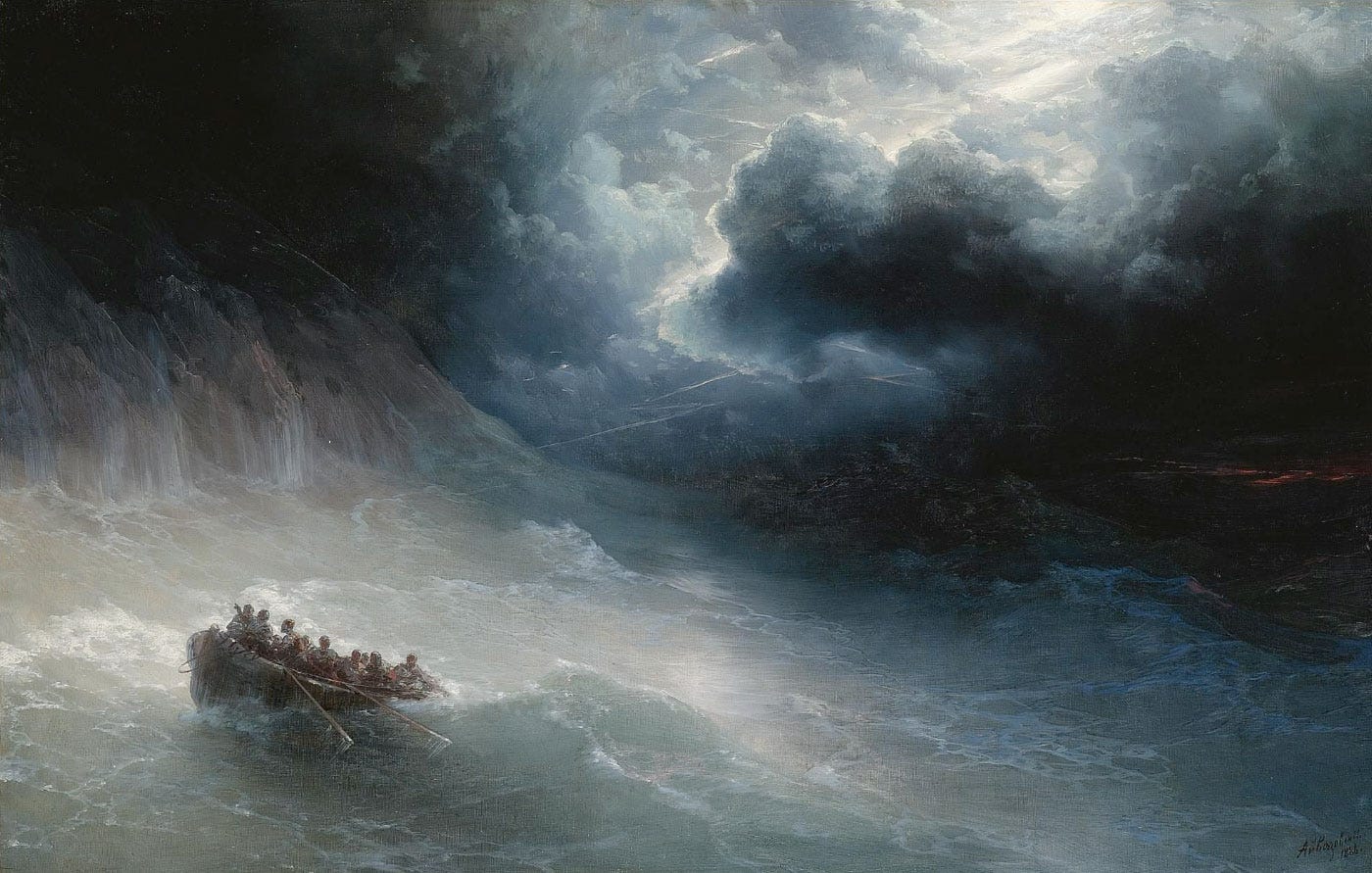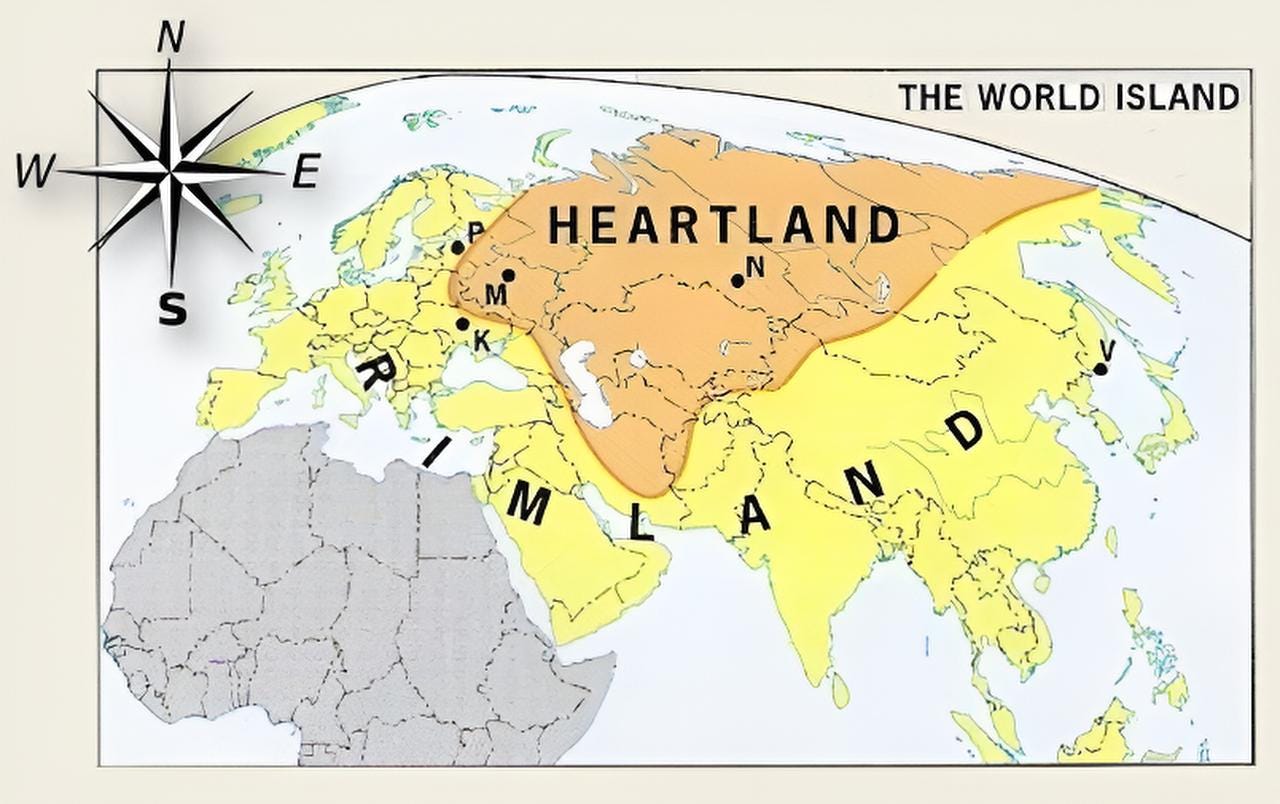Acta Eurasica
On the hidden geopolitics guiding Eurasia’s awakening
Luigi d’Angelo Tosoni traces the unseen forces shaping the struggle between land and sea powers, revealing how today’s Eurasian realignments evoke the deepest laws of geography and destiny.
“Burying America is our religious duty.”
— Alexander Dugin, The Mysteries of Eurasia
The recent developments in the Caucasus and Moldova were coming from miles away. Their taking place at all displays Eurasia’s current inferior position and weakness to anticipate the moves coming from the Thalassocratic Empire, even though they derive ultimately from exact and constant imperatives embedded in the very physical geography of the planet. Such lack of leverage and weaknesses may be partly due to the multifaceted structure of Atlantica, which can entail not-so-obvious power maneuvers. It has multiple, even anonymous, centers of power. Therefore, threats come from multiple directions. From NATO to AUKUS, global webs of NGOs, the Trilateral Commission, the EU, Israel, plus a multitude of allied lesser powers.
The United States and Western Europe appear to be teetering, always on the brink of civil war, economic collapse and radical domestic changes. Added to this, even though the interests between such players sometimes conflict, in practical terms they appear simply incapable of decoupling, of taking new diplomatic turns. In the midst of everything, the unchanging factor gets revealed and keeps unfolding, precisely because of geopolitical categories. They provide motion to the State structure and constant principles to alternating regimes. Obviously, it is a reality also because it ultimately may lead to total planetary dominion for the high-ranking. From such a prospect, the power games flow automatically. The transatlantic multiplicity comes together with a unified will. It is an objective predetermined in the geostrategy and all foreign policy of the thalassocratic web. And internal to the encirclement (“Anaconda”) strategy, directed informational and economic warfare, disruption of partnerships of all sorts, etc. That objective is: breaking and ruling over Eurasia. Definitely. Everything is at stake.
Eurasia forms a natural unity, a given; in opposition to the historical ocean connections between the maritime powers of Europe and the New World, which transfigured into the modern collective West. But it—the Land—requires an opposite pole of interaction, otherwise remaining a mere potentiality. After the Monroe Doctrine and through the Rimland penetration, it progressively started coming to actualization.
The Moscow-Tehran-Beijing alliance is the culmination of the geopolitical pragmatism necessary to counteract the restless pressures from the forces of Atlantica. Not by chance, Russia, Iran and China are formations of Great Continental Spaces more or less unified throughout history, carrying millennia plus of historical coherence and struggles within themselves. Their Statehood and traditional continuities being manifestly alive—all necessary responses to external pressures. Geopolitically, each of these nations’ spacial positions can be characterized as “central” in relation to the respective regions that they host. This is especially true in the case of Russia, which hosts the core of the “Heartland,” the geographical pivot of history.
The growing relationship1 provides Iran, the weakest member of the triad, a safety net against economic sanctions imposed by the United States. It also establishes for all players involved opportunities for techno-scientific cooperation of world-historical importance. The Moscow-Tehran axis is for West Asia what—on the field of geopolitical constants and the potentialities they carry—Moscow-Berlin is for Europe. That is, ideal positions for a strong Eurasian nucleus of strategic development and protection from outside influences by way of establishing spaces of contact between multiple energy, industrial, scientific and military connections.
After the end of the Cold War, the brief unipolar moment not achieving eternal victory and supremacy could only mean that, in truth, the objectives of the victorious entity were not fully achieved. And its underlying motion kept burning—as a consequence of Russia still existing at all. The State occupying the central space of the Heartland—along with its people—was not dissolved. Although plundered, reduced, enslaved, but not dead. The final vision of Atlantica—in all its cultural offshoots, from postmodern ahistoricity to American exceptionalism and Zionist messianism—is a Eurasian Heartland shattered into a thousand fragments, from which everything can be absolutely controlled.2
The remaining question is how to make the trust and coordination between these nations flow all over the rest of the Great Continent. It is reasonable and perfectly feasible to provide the practical interactions of the states in Eurasia with a systemic character and a joint motion towards clearly defined common goals. A positive, self-conscious, strategic construction emerging as a unity of opposition to Atlantic Globalization.
Although apparently this structure isn’t, as of yet, fully realized and deepened in all its most important aspects, in truth, the whole process is locked in. It simply cannot be reversed now. Since the external pressures will not cease, the Eurasian Alliance is inseverable at this point. It emerged directly as a response to external pressure. To dissolve it now would amount to an immediate and irreversible defeat.
Which prominently also includes Belarus and North Korea.
Brzezinski’s words, not mine.





The pressure isn’t going away. True.
Therefore, Step One is showing that they can resist the pressure at the weakest link. Because many states thinking of joining and committing are weaker than Iran.
So yes, the multipolar process moves forward as it must. At the same time, I don’t see Iran’s safety net as proving itself out yet. I believe that without more success on that front, overall progress will slow down.